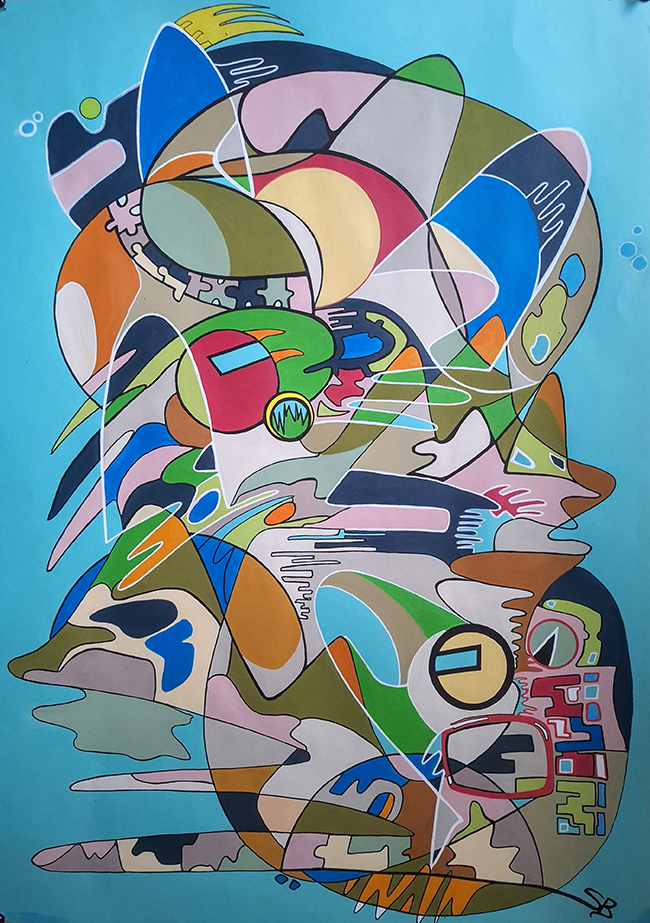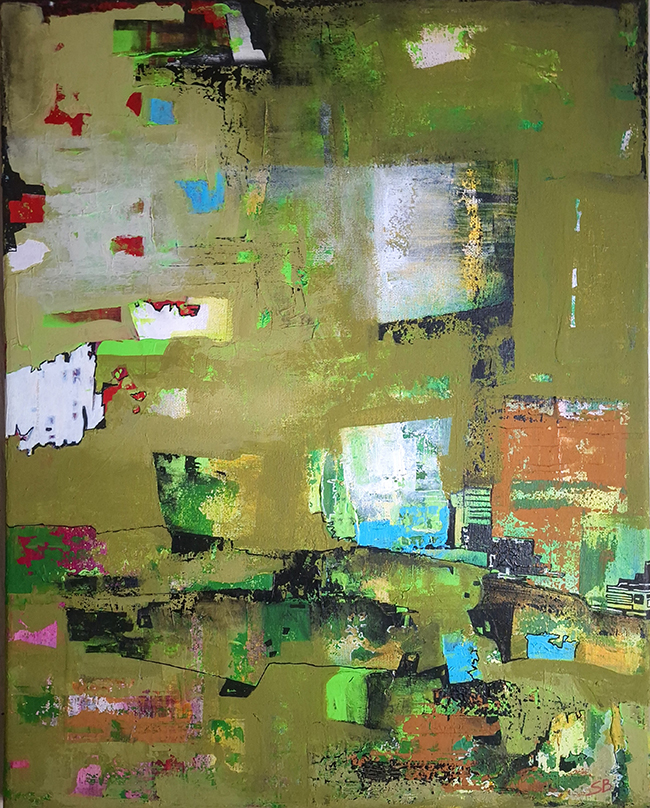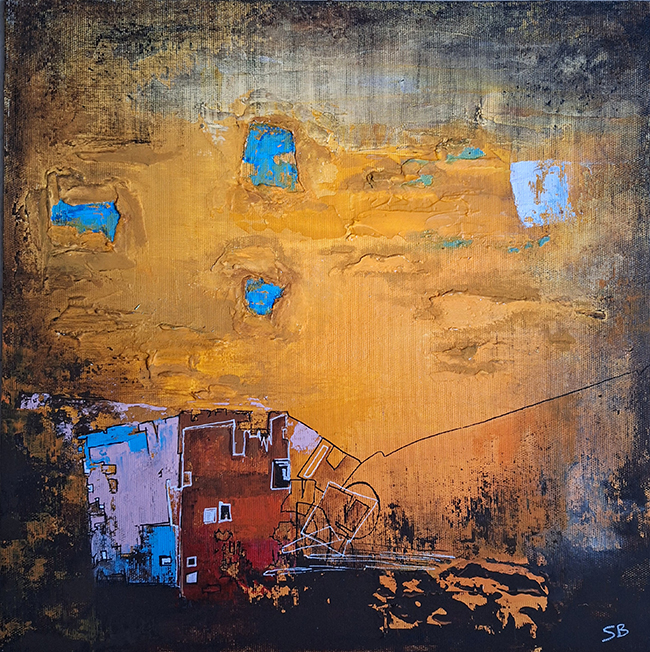Stuart Beck was born in 1967 in Lancashire, United Kingdom. His first lessons in painting came from his father, who introduced him to the basics and nurtured a quiet creative habit that stuck. Over time, Beck developed a visual language of his own—rooted in abstract painting but deeply connected to what he calls “the real world.” His work pulls from the things he’s seen in nature, architecture, and culture—across travels, memories, and daily moments. There’s an observational quality in what he does, even though the forms are abstract. What stands out in Beck’s practice is not just technique, but what he chooses to see and how he chooses to share it.
He doesn’t offer clear answers. Instead, he offers a reflection—often of disconnect, decay, or the beauty found in unlikely places. His paintings sit somewhere between confrontation and quiet contemplation.
The Artist’s Work

Beck’s painting, The Puzzling World, feels like a warning written in color. Painted in acrylic on paper, it picks up where his earlier piece Human Kind, Destroyer of Worlds left off. It’s not a literal image. There are no forests on fire or melting glaciers. Instead, Beck uses abstraction to talk about the fracture between humanity and the world we live in. The piece leans into contradiction—shapes that might once have fit, now out of place. There’s a disjointed rhythm to the composition, as if something is breaking down, slowly and unnoticed.
He’s asking a difficult question without spelling it out: What happens when we become so invested in fiction—our divisions, our systems, our structures—that we forget the basics? That we live on one planet. That we share it. That survival isn’t competitive. In Beck’s words, we are “so wrapped up in our own made fictional dystopia to the point of self-destruction.”
The Puzzling World doesn’t try to fix anything. It just points to the dysfunction. It’s uncomfortable and clear in its discomfort. But like much of Beck’s work, it’s also strangely beautiful—a visual contradiction of chaos rendered with care.
Then there are two more recent works: Untitled No.25 and Untitled No.26. Both move away from the global and toward something quieter, more personal. No.25, painted on canvas board with a yellow background, and No.26, on canvas with a green backdrop, are part of an ongoing thread that ties back to earlier works like Untitled No.18 and No.24.
These pieces are all about surfaces—what time does to the things we make. Beck talks about being drawn to the “weathered and aged manmade objects and buildings of the world.” These aren’t ruins in the grand, romantic sense. They’re everyday forms touched by rain, heat, neglect, and growth. The aesthetic is quiet but intentional. There’s decay, yes—but not in a way that suggests loss. Rather, Beck sees it as transformation. He connects it back to nature—not just in contrast, but in unity. As if even what we build eventually folds back into the environment that surrounds it.

The color fields in these works—yellow in No.25, green in No.26—carry weight. They hold the forms in place but also act as mood. You’re not quite sure what you’re looking at at first, but the feeling of weather, of history and erosion, is immediate. They aren’t depictions of specific objects or places. They’re impressions—of time, of wear, of resilience.
Beck says he has “a leaning towards combining” the natural and manmade. That’s exactly what these works do. They blend two types of beauty—what we build and what outlasts us. In that overlap, he finds a kind of harmony, a visual way of accepting that decay is part of the cycle.

What runs through all these works is a refusal to look away—from damage, from disconnect, from the slow shifts that mark the passage of time. Whether addressing the breakdown of global unity or the quiet peeling of paint on a forgotten wall, Beck stays present in his observation.
He paints what we stop seeing. He paints the consequences of distance—between people, between place and purpose, between past intention and current reality. And he does it without preaching. His style doesn’t beg for attention. It invites a slower look, a kind of still engagement.
There’s no clear narrative in Beck’s paintings. But there is a thread: transformation, awareness, and the uneasy beauty in forgetting—and remembering—what we’re made of.

